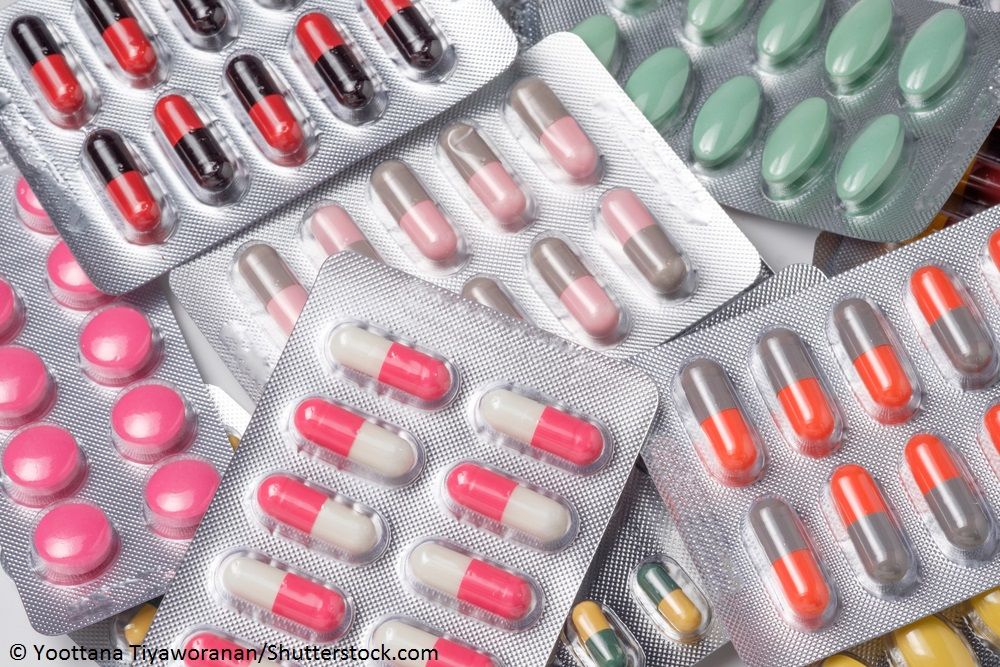Antibiotics May Boost Diabetes Risk
A new study also shows that patients with type 2 DM are more prone to infections years before they receive a diagnosis and may end up with an increased demand for antibiotics.
© Yoottana Tiyaworanan/Shutterstock.com

Patients with type 2 diabetes mellitus (DM) are more prone to develop infections years before they receive a diagnosis and end up with an increased demand for antibiotics, according to a new study. In addition, antibiotics may increase the risk of type 2 DM.
Both obesity and type 2 DM have been linked with alterations in the composition of bacteria in the gut. Specific antibiotics are known to disturb glucose homeostasis in patients with type 2 DM, noted the researchers, led by Kristian Mikkelsen, MD, Center for Diabetes Research, Gentofte Hospital, University of Copenhagen, Hellerup, Denmark. They also noted that the incidence of infections that may require treatment with antibiotics is higher in patients with type 2 DM.
In a nationwide case-control study, the researchers investigated whether antibiotics influence the risk of type 2 DM and if this effect can be attributed to types of antibiotics or the number of antibiotics courses. They used data from 3 sources: the Danish National Registry of Patients, the Danish National Prescription Registry, and the Danish Person Registry. They matched 170,504 cases of type 2 DM to 1,364,008 controls who did not have DM.
Their results show a 1.53 odds ratio (OR) associating type 2 DM with exposure to antibiotics of any type with 5 or more prescriptions of antibiotics versus 0 or 1 prescription. No individual group of antibiotics was specifically associated with type 2 DM risk. The association with type 2 DM was slightly higher with narrow-spectrum (OR, 1.55) and bactericidal antibiotics (OR, 1.48) compared with broad-spectrum (OR, 1.31) and bacteriostatic types of antibiotics (OR, 1.39).
The investigators observed a clear dose-response effect with increasing cumulative load of antibiotics. The increased use of antibiotics in patients with type 2 DM was found up to 15 years before diagnosis as well as after the diagnosis.
The researchers stated that they found an increased OR for risk of type 2 DM with increasing exposure to antibiotics, noting, “We found an essentially unchanged exposure rate in cases versus controls before and after the type 2 diabetes index date.”
They added that “because some of our patients may have had undiagnosed diabetes or hyperglycemia for an uncertain period before the index date and because the prevalence of obesity within the case group could be increased, we would expect a slightly increased demand for antibiotics treatment in the case group also prior to the index date.”
Evidence now suggests, they stated, that “antibiotics may drive changes in insulin sensitivity, glucose tolerance, lipid deposition, and energy harvesting potential by altering the gut microbiota composition.” The demand for antibiotics may be increased in patients with type 2 DM because of an increased risk of infections among those with yet-undiagnosed DM, prediabetes, or manifest type 2 DM. However, they could not exclude the possibility that exposure to antibiotics increases DM risk.
The researchers called for investigations of the long-term effect of antibiotics on lipid and glucose metabolism and body weight gain, in particular, looking at narrow-spectrum penicillins because these drugs showed the highest OR for type 2 DM risk.